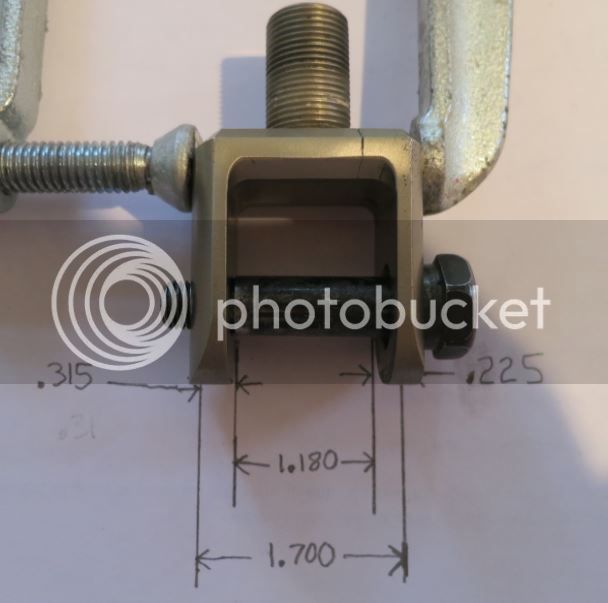Remember that waivers and caveats abound and only add to your defense. None of them prevent the situation where you end up PAYING to defend yourself.
Exactly so, sir! Succinct, too.
That said, someone's advice on how to make a particular modification found in the public domain on an internet forum, and then carried out by the owner / operator individually can never receive the kind of liability scrutiny that a seller of parts, modifications, or the original products would receive. I think that is a fairly safe position.
I'd quibble over the bolded and underlined language (lawyers get sued for bad results obtained by clients following our advice with some regularity). I would agree, however, that in the abstract, it is LESS likely. Whether a lawsuit is filed and how vigorously it is pursued against each defendant depends largely upon the facts and the identities (and tragic circumstances) of the plaintiff(s), who may be under severe financial and emotional duress. The amount of the potential damage award, the depth of the defendants' pockets and their available defenses are also significant factors. An example:
Assume that "Doc" is a member here, is a young and promising heart surgeon only a few years out of med school and has a lifetime of serious earning potential ahead of him. You know him to be a stand-up guy who would never sue a friend, and he relies on your engineering background and expertise to choose the inexpensive self performed fix you offer, foregoIng the alternative of buying an Ohlins replacement. Seems safe to do - for him and for you.
Though you know that Doc has a new wife and two young children, you don't know that he has an ex to whom he has been paying much of his earnings over a term that is to expire shortly. Consequently, he has yet to follow through on a financial plan for his new wife and kids. And when Doc's suspension fails and kills him, they are strapped - life insurance beneficiary is the ex and everything they have is mortgaged. A future that looked bright is suddenly trying and desolate.
Unforeseen by all when we were discussing a simple fix, it turns out that Doc's sympathetic widow is the liability lawsuit decision-maker whose priority in life (having lost Doc's future income and support that the economist expert pegs at 8 figures) is taking care of her children's welfare, education and the family's support. She sues because she feels she has no alternative. This widow and her children scare defense attorneys because she is so sympathetic in her efforts to care for and raise Doc's children - a jury could go nuts. This drives settlement discussions with a multi-party dynamic that can give the little guy defendant heartburn.
Penske may have deep pockets, but their attorneys note that they never recommended a different sleeve, spacer, washer, bolt, whatever. They claim that Doc installed this unauthorized fix in a way that caused the failure and his death, whether or not that was the way the outside advisor/part maker instructed. If it's Doc's fault, his widow's recovery from Penske is reduced wholly or partially by his own comparative fault. If it was the fault of the outside advisor's part or recommendations, his widow's recovery from Penske is reduced in whole or in part by the comparative fault of the outside vendor. Guess who she must seek compensation from? Yep. And even if the advisor/parts supplier does prevail, that will cost significant fees if an insurer is not covering it.
Moral of the story, then: when you have desperate parties playing for keeps within this adversarial legal system, and when you are the outside advisor/part supplier who is uninsured for this risk and you have significant assets, watch out! Arguments can be made that you are responsible, and as Bounce rightly notes, the cost of defense can be a large gorilla on your back. Settlements are made in many cases simply because it makes more bottom line sense to make a deal than to put all of your lawyer's kids through college and grad school.
In the abstract, is that the probable result? No. Have I seen that sort of thing happen? Oh hell yeah! They're not called "war stories" for nothing and they're often sad. My ex was a bankruptcy attorney, btw, and she lost two clients to suicide in her first nine years of practice. Holes can be that deep. Again, I'm not telling you what to do, but the legal system is broken and unfair results that seem to defy common sense occur.
On the bright side, I seriously doubt that Penske is ignoring this issue. Furthering one of the best traditions of the FJR Forum, you guys have done a hell of a job developing information they can use. I'd suggest that everyone with this shock contact Penske and alert them to this thread and your concern. Ask if they are contemplating a fix, to keep you in the loop, and what they recommend in the interim. (Maybe an interim fix like you suggest, Fred - but on their dime and insurance coverage.) Thank God no one has yet been hurt and winter will be reducing miles while they address the problem.





















































